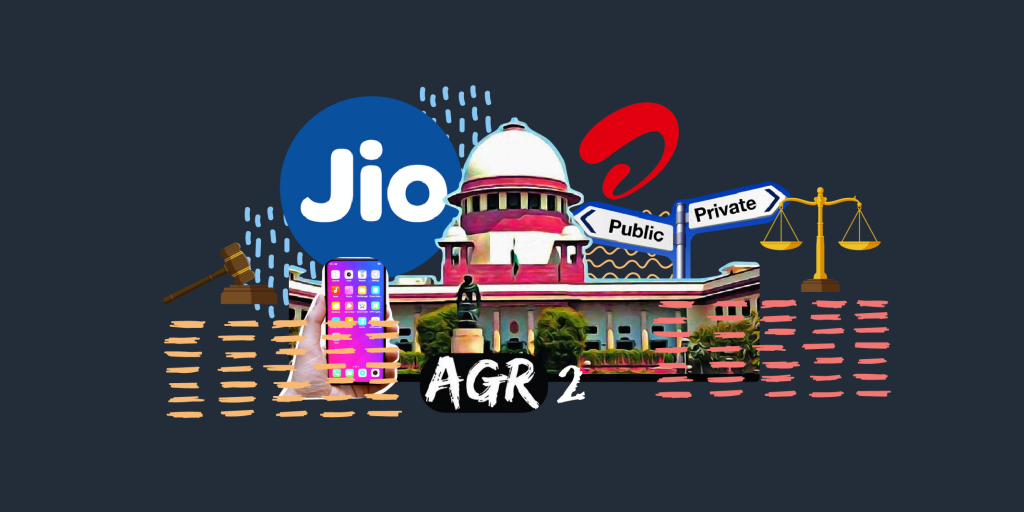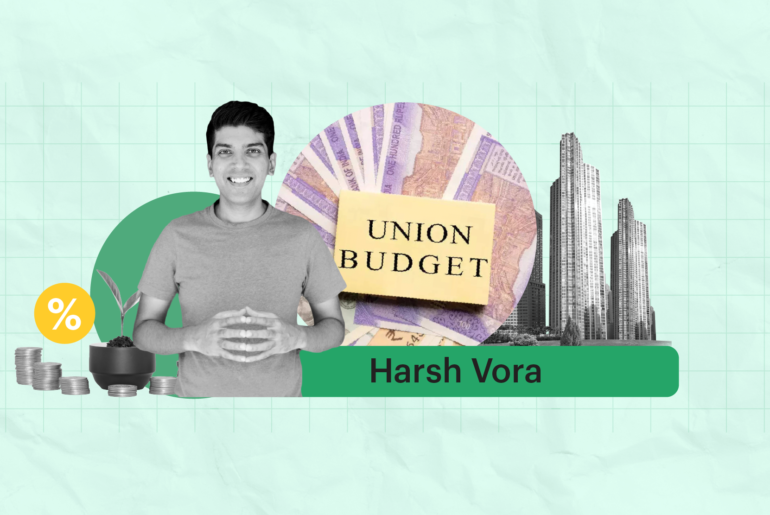Last Updated on Apr 6, 2021 by Manonmayi
In the AGR story: part 1, we read about telecom operator’s adjusted gross revenue case, Supreme Court’s verdict on it, and how it impacted Vodafone Idea. As assured, in this sequel, we will talk about how Bharti Airtel is prepping to pay its AGR dues and how Jio can hinder its efforts in getting clean. Let’s jump right in.
The article covers:
How has SC’s verdict on AGR impacted Bharti Airtel?
Why should you be concerned about an increase in Airtel’s arpu?
Impact of the nation-wide lockdown on the telecom operators
Bharti Airtel’s disappointment
Hiking tariffs is not an easy game for Airtel
Will Reliance Jio cooperate with Bharti Airtel to hike tariffs?
Table of Contents
How has SC’s verdict on AGR impacted Airtel?
While the SC’s verdict on the deferred payment of adjusted gross revenue hit Vodafone Idea like a storm, it came as a breather for Bharti Airtel. When the SC upheld DoT’s definition of adjusted gross revenue in 2019, Bharti Airtel was instantly burdened with AGR dues of Rs 36,000 cr. So far, the telco has paid 40% of the AGR dues.
But the latest AGR verdict requires telecom operators to pay 10% of the deferred AGR dues upfront, within the next 7 months. This translates to Rs 2,600 cr for Bharti Airtel. Post this, the telco would have to pay annual instalments of Rs 3,500 to Rs 3,900 cr approximately through 10 yrs. This accounts for just 22% of its operating profits, which suggests that Airtel is in a good position.
However, like Vodafone Idea, Airtel has to also meet expenditures other than the deferred adjusted gross revenue dues: annual adjusted gross revenue payment, capital expenditure to maintain its market share, and other operational costs. With the current average revenue per user (arpu), meeting all these expenses can be a bit tricky. That’s why analysts opine that it is imminent for Bharti Airtel to increase its average revenue per user by at least 10%.
Why should you be concerned about a likely increase in Airtel’s arpu?
To increase its arpu by 10%, Bharti Airtel has to hike its tariffs by at least 10%. This would mean subscribers of Airtel would see a significant hike in the operator’s tariff in the coming quarter. Meaning, ultimately, it is the consumers who will have to bear the brunt of SC’s verdict. But it’s not as straightforward as we think. Let us understand why.
Impact of the nation-wide lockdown on the telecom industry
We know how Reliance Jio disrupted the telecom industry by offering free data and voice plans in late 2016. But Jio was clearly not satisfied as it continued to serve its subscribers with supreme data experience at dirt cheap prices. That is when the trouble started for Vodafone Idea and Bharti Airtel, which have collectively been shedding subscribers on a consistent basis to this day.
But the nation-wide lockdown caused more harm to Vodafone and Airtel than the other players in the telecom sector. Here are the details per TRAI’s May subscriber data.
Source: Gadgets 360
Reliance Jio’s market share for the month stood at 34.33%, Airtel’s at 27.78%, and Vodafone Idea’s at about 27.09%. The remaining 10.50% was claimed by BSNL.
Source: Gadgets 360
The report also shows that Bharti Airtel and Vodafone Idea lost 47.428 lakh and 47.263 lakh subscribers in May, respectively. On the other hand, Reliance Jio and BSNL added 36.577 lakh subscribers and 2.015 lakh subscribers respectively.
Bharti Airtel’s disappointment
A steady decrease in the subscriber base due to the competition from Jio has clearly been the reason for some of Airtel’s woes. In fact, Chairman Sunil Bharti Mittal expressed his disappointment in unusually low prices of the current data plans and also dropped a bomb. He revealed that Airtel’s customers should expect a hike in tariffs in the next 6 mth. Meaning, they should be prepared to pay more for the same data they consume. Either that or they should be ready to use just 1/10th of data at current tariffs.
Hiking tariffs not an easy game for Airtel
Despite its Chairman declaring that a hike would be vital for Bharti Airtel, implementing it is not all that easy given some hurdles:
- The pandemic has resulted in pay cuts and loss of income in many households. This has forced subscribers to reduce their expenses on recharges and also abandon the second SIM. A hike in tariff in such a premise would not serve Airtel’s purpose
- The second and the toughest of both is Reliance Jio. Ambani-led telecom operator’s cheap voice and data plans have already disrupted the industry and been a source of disappointment for other telecom players for a few years now. But, if Airtel wants to hike its tariffs, getting Reliance Jio on the same page is a must
Will Reliance Jio cooperate with Bharti Airtel to hike tariffs?
Ever since Jio entered the telecom market in 2016, it has largely influenced the tariff structure in India. We have already seen a ~25% hike in tariffs in Dec 2019, which was only possible because Reliance Jio was game. So, this time too, Jio’s cooperation is necessary. Will Jio agree for another round of hike? This only Reliance can answer. But let us attempt to understand what may happen.
We know that Reliance Jio has been on a roll since a few months now. It has been attracting marquee investors who have invested millions of dollars in its business. One of them is Google Inc. The deal between them is to launch an affordable smartphone in India. Plus, Jio wants to enhance data consumption among Indians, which means the tariffs need to be low. In such a backdrop, if Reliance Jio agrees to increase the tariffs, the primary purpose of the deal as well as Jio’s aspiration would be defeated. How can an affordable smartphone and high network tariffs go hand in hand?
Where does this leave Airtel?
The most feasible option for Airtel then is to hike the tariffs before Reliance and Google launch an affordable smartphone. And as per Airtel’s Chairman, a hike in tariff within the next 6 mth is underway. But how much of a hike can we expect? Well, the analysts say 10%. But only Bharti Airtel can reveal the actual figure.
Phew! Seems like the telecom sector drama is to continue. And then we have the 5G scenes. Even though the operators are eager to introduce this advanced technology in India, are consumers looking forward to it? But feasibility defeats the want here. Because, the most appropriate question to ask, given the current financial stress, is whether it is feasible for Indians to pay for a 5G network?
We hope you enjoyed the read. Share it with your friends and acquaintances if you did. Let them know what they can expect in the coming days




